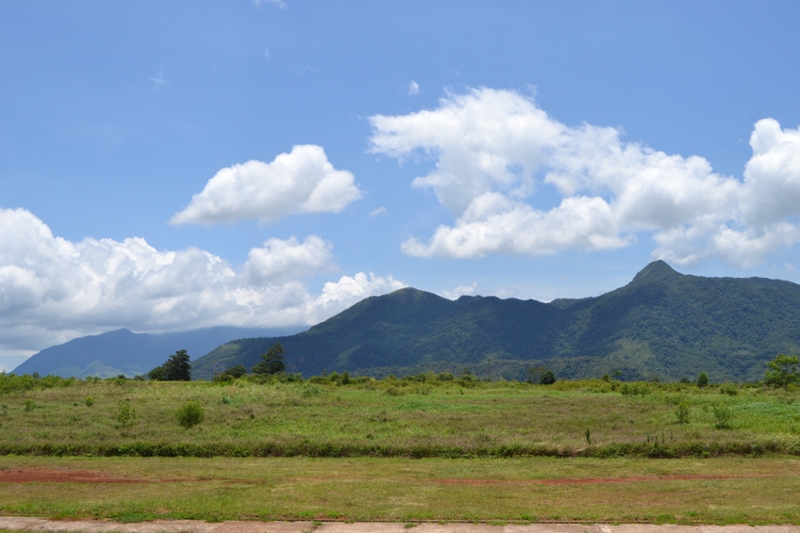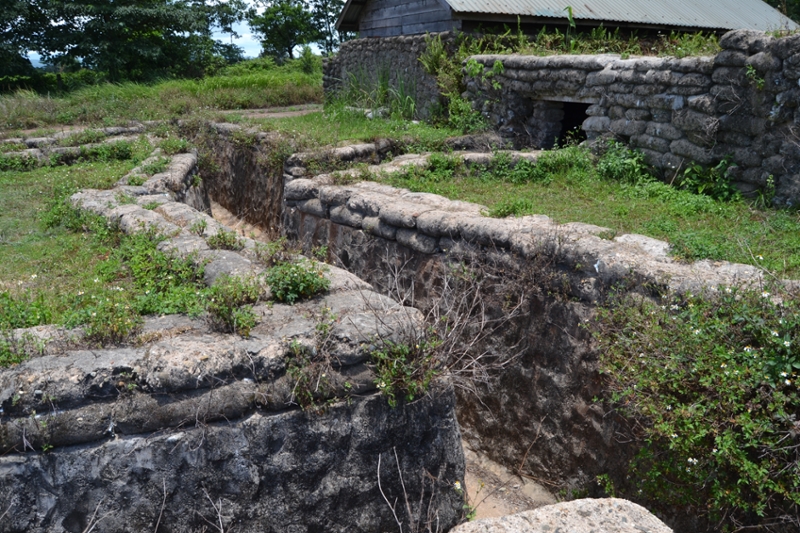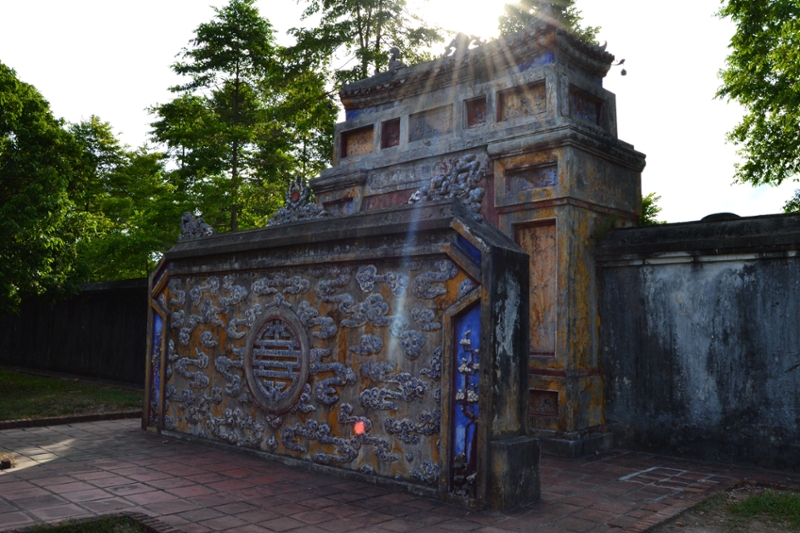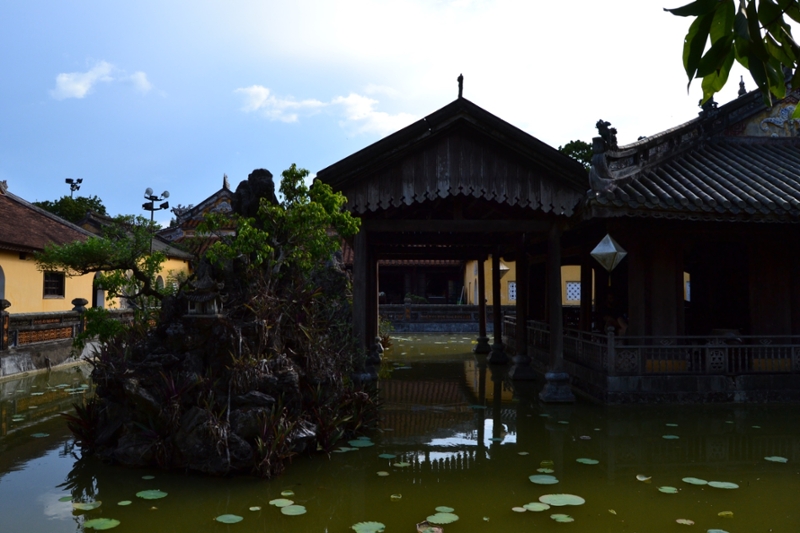Week 9: Meetings at the US Embassy; Vietnam
With the training over, my co-workers and I returned to the sometimes un-glamorous yet indispensable business of keeping the office running. Since Karen and Sanjeewa from the Geneva headquarters were in town for the week, we would also meet with a number of different international embassies that might give us funding. On Monday, our agenda included two appointments at the US Embassy. The first was with three USAID officers, and the second was with the Acting Chief and Deputy Chief of Mission.
I don’t know if I can characterize the combination of events surrounding the USAID meeting as anything but highly amusing. Simon and I traveled separately from our colleagues to the Embassy, and got there before them. Once we started the process of going through security, we realized there was no going back. We found ourselves inside the gates, and without our phones. Immediately, a security officer materialized to escort us to the USAID office. There, the officers were itching to get the meeting started early.
A co-worker at my job with the Institute for International Liberal Education once lamented over the fact that I wouldn’t come to lunch because I was the group’s “main conversationalist.” I’ve found that characterization to ring true in quite a number of situations, including this one. Everyone in the room seemed to realize that if they stared at me long enough I would start talking. So, I began to explain IBJ’s work, emphasizing the significance of providing legal services in the provinces. Luckily, I only had to improvise for about five minutes until Karen, Sanjeewa, and Mr. Vandeth arrived, and took over the job of impressing, among others, an American who had just arrived back from a trip to Washington, D.C. at 1:00am that morning. Their skill in doing so was admirable.
The second meeting, with the Acting Chief and Deputy Chief of Mission, was excellent. The two were completely open to hearing about how IBJ has been able to work within the justice system in Cambodia. The Acting Chief was interested to have us explain how despite the political issues that make high profile cases unfair, we can represent people from economically disadvantaged communities and achieve real justice in court. The story goes something like this:
Since IBJ Cambodia began its work in 2005, judges and prosecutors have come to trust IBJ lawyers. Many judges and prosecutors now recognize that ensuring the right to legal representation ultimately helps move cases toward a final judgement. They also understand that nothing positive results for anyone when a trial is not fair. IBJ Cambodia’s work remains crucial, however, because even judges who believe in the right to representation may not be able to find a lawyer to represent the defendants who appear before them without IBJ. In some provinces, our IBJ lawyer is the only lawyer. After budget cuts by major funders, IBJ Cambodia received letters from 20 judges, 5 prosecutors, 8 NGOs, 10 lawyers, and the OHCHR expressing support for IBJ’s mission and entreating the organization not to leave Cambodia.
At the meeting, Sanjeewa said something that really stuck with me: "there is no trickle-down justice." While international efforts often focus on broad goals related to the overall functioning of the judicial system, change in that area can be slow, and policies implemented at the ministerial level may not be effectively enforced. Working on ensuring representation and fighting for justice within the flawed, yet basically functional system has the potential to reach more everyday people and truly change lives.
Hue and Quang Tri, Vietnam
At the end of the week I took some time off and headed to Vietnam. I’d been wanting to go there for many years, so when I hesitated at the expense, I reminded myself that it might be a while before I get to this part of the world again. I originally planned to explore Da Nang, and perhaps Hoi An. After just one night in Da Nang, I decided spur-of-the-moment to travel north to Hue.
My paternal grandfather, Stanley R. Smith, had been stationed in Da Nang during the Vietnam War. He died on May 11, 1968 in Quang Nam province. In one sense, I liked the idea of simply existing where he had been. At the same time, I wanted to learn more about what it was actually like during the war. Most people access the few military sites that have been preserved from Hue. One of those sites is the Khe Sanh base. This trip would be particularly meaningful for me, because my grandfather received a bronze star for delivering supplies to Khe Sanh during the infamous siege.
The base is almost all the way at the border with Laos, in a valley with an incredible view of the Annamite Mountain Range. Just two wooden structures, three bunkers, a network of trenches, and an artillery installation make up the site. The lightly landscaped grounds host a museum, a few helicopters, and a cargo plane. Walking through the trenches and bunkers helped me to imagine my grandfather’s existence in Vietnam. I even found an American military phone in the museum that looked just like a sketch he sent back to my dad. In the end though, what struck me most about the place was how remote it is. There are basically no homes or businesses within 10 miles; the siege of Khe Sanh wasn’t about defending a city or village, but holding on to an empty piece of land.

View of the Annamite Range from Khe Sanh

Trenches at the Khe Sanh military base
Hue itself is a beautiful, calm city with lots of green space and some of the best food in Vietnam. It also houses the former Nguyễn dynasty imperial citadel, built in 1804-1832. Walking the grounds in late afternoon sunlight was a highlight of my trip.

A back gate to the imperial citadel

A pond and tea room in the imperial citadel